Cold Weather Problems
Hypothermia is a subtle malady that can become fatal. It’s a dangerous reduction in the core temperature of the body. It’s subtle because it impairs your ability to detect it. The symptoms are difficult for you to notice. The symptoms of mental confusion and impaired judgment can cloud the diagnosis of hypothermia when you’re by yourself.
Temperatures as warm as 40°-50°F have taken many lives. It is the killer of the unprepared. Occurrence is common after a hike, and it can happen when you’re setting up camp or resting.
A surprise summer storm that brings on wet and cooler temperatures can be a problem. Fog, cold, and wind seem to go together. A sudden, cold winter storm can also be a threat.
Hypothermia’s initial symptoms are uncontrollable shivering, irritability, clumsiness, slurred speech, and loss of rational judgment. These mild cases can quickly change to a severe case with the victim exhibiting an inability to stand, stay balanced, or move. In severe cases, shivering stops; there is a slow, weakened pulse; and loss of consciousness can occur.
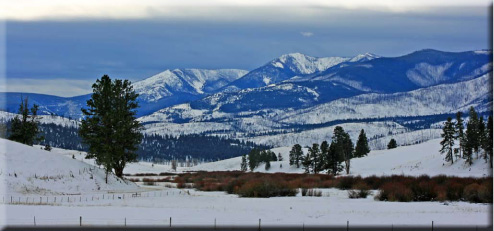
The goal of treatment is to stop further body heat loss, to warm up the victim slowly, and to provide rescue. The patient must be handled gently to minimize the load on the heart. Don’t allow them to walk, and keep movement to a minimum.
Immediately remove the victim to a sheltered area away from the wet, wind, and cold. Insulate them from the cold ground with any suitable item available. Warm them up slowly by removing damp clothing and replacing it with dry, insulated clothing or sleeping bags. A warm drink or food aids in raising their core temperature. Direct skin contact is also helpful. Hug them inside their sleeping bag. Allow the victim to rest. In severe cases seek medical help.
Prevention is better than treatment. Dress correctly in layers. Avoid heavy sweating and protect yourself from becoming wet. Extra clothing, socks, and warm hats are essential. High energy foods and enough fluid help the body produce heat. Hunger and fatigue contribute to hypothermia. Cold, wet conditions are worse than cold, dry conditions. The wetness and its evaporation suck heat away from your body.
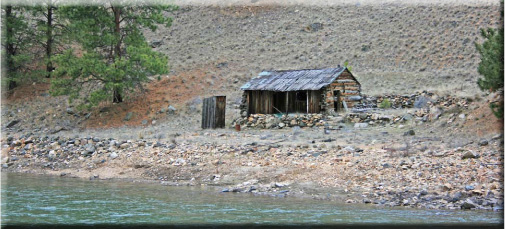
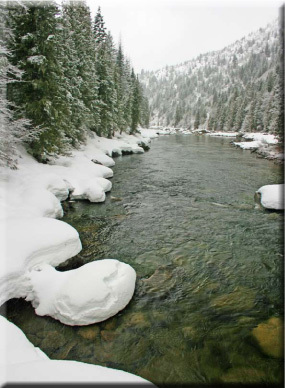
After a hike quickly change your damp clothing into dry, warm clothing. While you are actively hiking, your body produces warmth from muscle contraction and also perspiration. After you stop, the warmth is no longer produced by muscle movements and evaporation from the damp clothing reduces your temperature.
Be alert for the early signs such as shivering. Stop and warm yourself up. Avoid the mental disorientation which makes matters worse. Loss of finger dexterity is also a symptom.
Watch out for sudden storms. Changing weather poses a threat of hypothermia, especially in the summer months. An unexpected rainstorm with a temperature as high as 50°F has taken many lives.
It’s a good thing that hypothermia is easy to combat and to treat. Remember, those that are unprepared are in trouble.
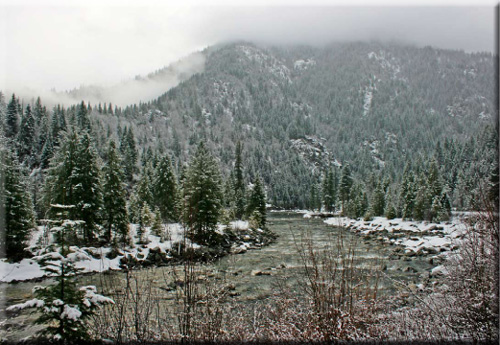
Lightning
When I was only five, my grandmother told me that thunder and lightning were caused by our Heavenly Father moving his furniture around. Over the years I have been truly frightened and genuinely humbled by the power of Mother Nature. It seems that as soon as the fishing gets good, I’m out in the middle of a pond in my float tube counting the seconds between the lightning sights and sounds.
Lightning plays an essential role in producing or releasing needed nitrogen to fertilize plants. It’s estimated that 100 million tons of nitrogen are released annually by lightning. The rain washes it to the ground. Lightning also starts wildfires which help burn out the thick undergrowth and make room for new plants.
In the American West, lightning can be somewhat predictable. A cycle of afternoon summer storms brings on the show. These cycles last about a week and start off with a cloudless sky. By mid-afternoon clouds gather, darken, and the fireworks start. So when hiking in the mountains, plan to be near a safe haven each afternoon, especially the wet ones. Avoid the mountain summits and ridge lines.
In the East, lightning is related to high humidity and moisture from the Gulf of Mexico. The jet stream brings these together but you cannot predict when.
I’ve noted that when the sky darkens, the range cattle descend to a lower area. The cows lead their calves down from the open, grassy ridge tops. You can see all of these cows marching simultaneously to a lower area. They even do this before the lightning starts.
A descent for safety is a good idea. Avoid high, exposed areas. If you are below timberline, take refuge in the trees but don’t sit beneath one. The rule is “Be among the trees but not too near any of them.”
If thunder and lightning are close, make yourself as low as possible because lightning strikes the highest grounded object in the vicinity. Insulate yourself from the ground by sitting on your pack and pad. Crouch low on both feet so that your footwear will help insulate you. Avoid any conductors such as metal trekking poles, metal pack frames, and graphite fishing rods.
Thunder travels one mile in five seconds. By counting, you can estimate how far away the lightning is. When it is close to a mile away, immediately seek shelter. Avoid flat places and meadows where you are the highest point around. Avoid solitary trees, ledges, cliffs, and ridge tops. Never seek shelter in a shallow cave because ground lightning is attracted to them. However, a deep cave will do.
Lightning strikes in three ways: within a cloud, cloud to cloud, and cloud to ground. You also can be injured in various ways. A direct strike, rebounding splash, ground current, and an air blast can all harm you.
When one is struck, a major problem can be cessation of breathing. Also the heart may not be pumping and may be in fibrillation. Thermal burns and blown ear drums are other concerns.
First aid is CPR. Breathing and heart function must be immediately restored. Usually if you rescue breath first, the heartbeat returns. Monitor both and have a current knowledge of CPR. The victim will likely be unconscious and appear dead, but CPR can restore life.
Again, be prepared by placing yourself out of harm’s way. A vehicle with its rubber tires insulates you from the ground. Its metal shell will direct a hit on its outside. Park it in a low area and don’t be the highest feature. I’ve sat out many a storm sitting in the middle of my vehicle.
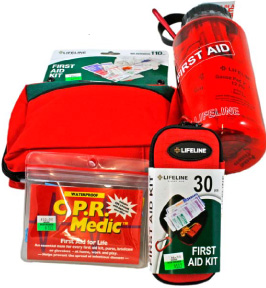
Weather Predicting
Weather forecasting has vastly improved with technology. Weather patterns are somewhat predictable, but when I’m out in the back country, the ten day forecast for the area may not hold up.
The physical geography can cause micro climates that are areas that have their own storm characteristics. Lakes and high mountains create lake effect storms, and as cool air rises over the mountains, precipitation can result. Winds build in the mountains as warm air rises and cool air falls. The windward side of a mountain may have far more precipitation than the leeward side.
Look for natural signs to help you with your forecast. The color of the sky and the smell of the earth can be predictors. The activities of swallows and insects can also be a reliable source of information.
A “red sky at night, shepherds delight” indicates that fair weather is approaching, while a red sky in the morning may mean that rain is coming. The eastern horizon is red because the sunlight is reflecting on moisture in high cirrus clouds. If prevailing wind direction is westerly, these sky colorations are fairly dependable predictors of the weather.
A low atmospheric pressure system means bad weather is approaching. Many animals are sensitive to a falling barometer. Insects hover closer to the ground and some birds fly low to catch insects when the air pressure is lowering.
The presence of still air allows you to smell the earth and plants with more intensity. Still air indicates that the barometer is steady and the weather is fair. When your campfire smoke goes straight up, the weather will likely be fair. If this smoke swirls in different places, the weather is unsettled.

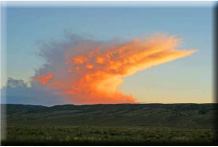
A corona or ring around the moon is a sign of upcoming precipitation. A sun’s halo also indicates pending poor weather. The small ice crystals in the atmosphere cause these coronas.
Cloud formations and their movements are another weather sign. Being able to recognize cloud types is helpful.
Stratus clouds are gray, long, shallow clouds that usually indicate periods of rainy weather. Commonly they fill the whole sky. When these stratus clouds are low in the horizon this means bad weather.
Cirrus and Cirrocumulus clouds often occur during fair weather periods. When these two clouds start to collect together, it means upcoming bad weather. Cirrus clouds look like wispy commas. Cirrocumulus clouds look like horse tails
Cumulus clouds are the ones that look like cotton balls and are white, relatively thin, and have level bases. When these clouds retain their shape, and large areas of blue sky are in between them, fair weather is on the forecast.
Cumulonimbus clouds occur when cumulus clouds grow vertically and darken into anvil shapes. This means a rainstorm is coming. Lightning is likely to occur from the electrical charges accumulating in these clouds.
Plan your adventure with the best forecast available, but be aware of changing weather patterns that are not on the forecast. Be prepared for the worst. Remember most cases of lethal hypothermia occur on summer outings when the temperature drops to only 50° F. with rain.

Camping Adventures • Dutch Oven Cooking • Sports Knots
Fly Tying • Freshwater Fishing • Fly Fishing

